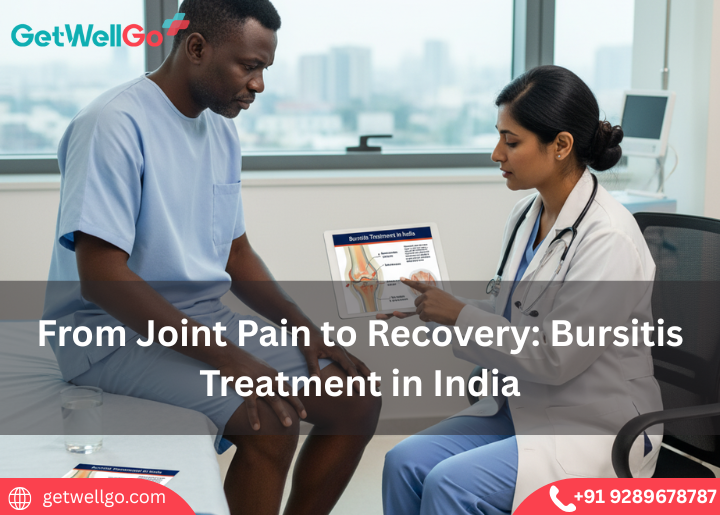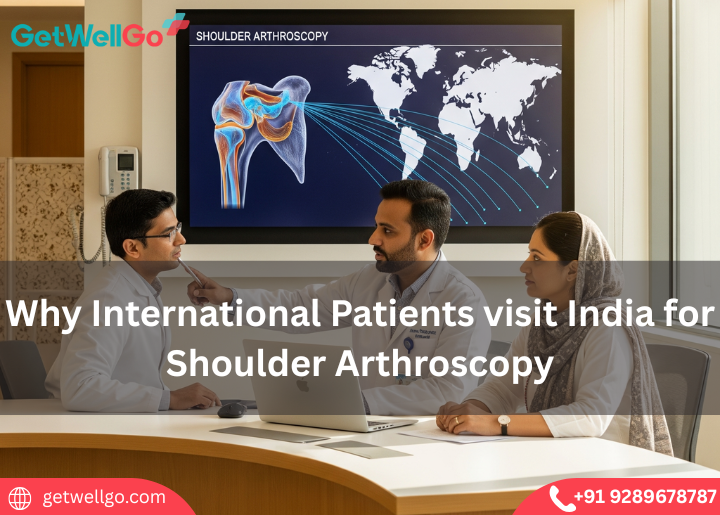
How International Patients Find Relief from Myopathies in India
GetWellGo helps international patients access advanced treatment for myopathies in India, ensuring expert care, comfort, and faster recovery abroad.
Read MoreGetWellGo connects patients with trusted hospitals in India for spinal fusion surgery, focusing on pain relief, stability, and improved movement after spinal issues.

Category
OrthopedicPublished By
GetWellGo TeamUpdated on
23-Jun-2025Spinal Fusion Surgery in India is a very common procedure offered in various top-notch hospitals by highly skilled spine surgeons, modern technology, and more affordable prices than in Western nations. Here is an in-depth summary:
Spinal fusion is a surgical operation employed to fuse two or more vertebrae in the spine permanently. Its aim is to stop motion between them and give stability, commonly employed to treat:
Spinal fusion surgery recovery in India is a well-planned timeline, and results are based on surgery type, numbers of vertebrae fused, patient's general health, and post-operative management.
Hospital Stay (3–7 days)
Day 1–2: Monitoring in ICU/ward, pain management
Initial Recovery Phase (0–6 weeks)
Intermediate Phase (6 weeks – 3 months)
Bone Fusion Completion (3 – 6 months)
Full Recovery (6 – 12 months)
Minimally Invasive Spinal Fusion (MIS Fusion) is a revolutionary method to stabilize the spine with minimal trauma, small incisions, less hospital stay, and quick recovery as compared to the conventional open fusion surgery. India is a world center for this surgery because it has highly experienced spine surgeons, high-standard hospitals, and low costs.
In MIS fusion, specialized devices and imaging technology (such as fluoroscopy, navigation, or robotics) are employed to conduct the surgery through small cuts. The aim is to fuse two or more vertebrae with rods, screws, and bone grafts with minimal destruction of nearby muscles and tissue.
Lumbar spinal fusion is a surgical procedure that stabilizes the lower back (lumbar spine) by fusing two or more vertebrae together permanently. It is one of the most successful and frequent treatments of chronic lower back pain due to structural spinal conditions.
Spinal fusion in India is very successful, particularly when it is done by skilled surgeons at top medical facilities. Success is measured in terms of relief of pain, restoration of stability, and the capacity to regain usual or near-usual activities.
Overall Success Rate
85% to 95% success rate in the majority of cases of spinal fusion
Highest in:
Success Rate according to Condition
India has grown to become a medical tourism destination from all over the world for complex procedures such as spinal fusion surgery because it offers a union of affordability, world-class facilities, and globally qualified spine experts.
Cost-effective
70–80% less than US/UK, without sacrificing quality
Expert surgeons
Hundreds of them trained in US/UK with experience spanning decades
State-of-the-art technology
Robotic surgery, O-Arm guidance, minimally invasive instrumentation
Accredited institutions
NABH and JCI-approved for international patient standards
Short waiting times
Quicker access to treatment than in Western nations
English-speaking staff
Smooth and clear communication
Documents Required for Medical Travel
Most large hospitals provide the following:

GetWellGo helps international patients access advanced treatment for myopathies in India, ensuring expert care, comfort, and faster recovery abroad.
Read More
From joint pain to recovery, GetWellGo connects international patients with advanced bursitis treatment in India for lasting relief and mobility.
Read More
GetWellGo helps international patients access India’s leading arthritis surgery & treatment with expert doctors, modern care & affordable options.
Read More
Travel to India for minimally invasive spine surgery with GetWellGo: faster healing, reduced pain, and world-class care for international patients.
Read More
GetWellGo connects international patients to advanced peripheral nerve surgery in India, ensuring expert treatment, safety, and holistic recovery.
Read More
Failed Back Syndrome treatment in India with GetWelGo. Access advanced care, expert surgeons & affordable solutions. New hope awaits international patients.
Read More
Foraminotomy in India made easy with GetWellGo. International patients get expert spine specialists & trusted care to relieve back pain effectively.
Read More
GetWellGo connects international patients to trusted Osteoporosis Stem Cell Therapy in India, combining expert care with cost-efective solutions.
Read More
GetWellGo helps global patients access top doctors in India for shoulder arthroscopy—advanced techniques, cost savings & trusted healthcare.
Read More
Robotic knee replacement in India helps global patients regain mobility with precision surgery, faster recovery, reduced pain, and long-lasting joint function at affordable costs.
Read More
Planning Arthroscopy Surgery in India? GetWellGo shares 5 key facts every international patient should know for safe, affordable, and effective treatment.
Read More.png)
Discover why international patients choose India for disc replacement surgery, with expert spine surgeons, advanced technology, affordable costs, and world-class rehabilitation care.
Read MoreFill the form below to get in touch with our experts.
Please fill in your details below and our experts will get back to you.